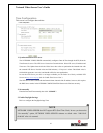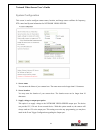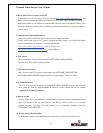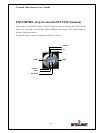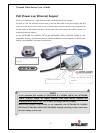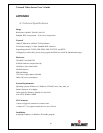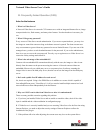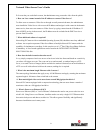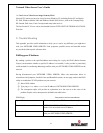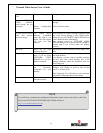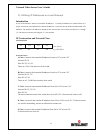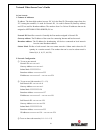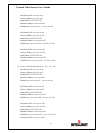
Network Video Server User’s Guide
51
D. In case that you use default account, the administrator may protect the video from the public.
6. How can I use a name instead of the IP address to connect Video Server?
To allow users to connect to Video Server through an easily memorized name, the administrator
must installs the Video Server with a reserved IP address and assigns it with a name in the domain
name service, then users can connect to Video Server by typing a name instead of IP address. If
there is DHCP service in the network, the IP address must be excluded in the DHCP service to
prevent from IP conflict.
7. What additional software is required?
Networking IP Cameras with an embedded Operating System (OS) should not need any additional
software. An exception represents Video Surveillance of multiple Network IP Cameras with the
capability of simultaneous recordings. In this case the use of a 3
rd
Part Video Surveillance Software
is mandatory. A list of tested applications can be found at the INTELLINET NETWORK
SOLUTIONS Web Site.
8. How does the built-in motion detection work?
It very simply compares what it sees now to what it saw in the last frame and based on a sensitivity
you select will trigger an event. The event can be to send an email, to send an Image to a FTP
server, or to send a series of images (before and after the motion is detected) to an email address or
a FTP server-all with software built into the camera, nothing else is required.
9. What is the maximum length Ethernet cable I can use?
The same topology limitations that apply to any 10/100 Ethernet card apply, meaning the maximum
segment length is 100 meters from switch/hub to the camera
10. How much digital video can be stored on a normal 200-gigabyte hard drive?
Network IP Cameras equipped with a compression technology that can store almost a month of
continuous video on a 200-gigabyte hard drive.
11. What is Power-over-Ethernet (PoE)?
Power-over-Ethernet (PoE) or "Active Ethernet" eliminates the need to run power to devices on a
wired LAN. Using Power-over-Ethernet, installers need to run only a single CAT5 Ethernet cable
that carries both power and data to each device. This allows greater flexibility and significantly
decreases installation costs in many cases.



